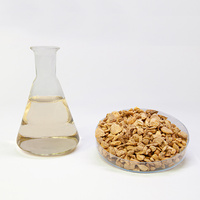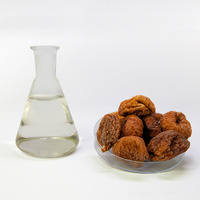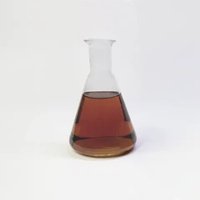Fig, the fruit of the common fig tree, has been cultivated since the 3rd millennium BCE and was present in the symbolism of all cultures that knew this tree. The fig tree, which bears fruit four times a year, symbolized prosperity and fertility, and in ancient Greece, the appearance of the first shoots on fig trees marked the beginning of the season for sea voyages. Fig has unique nutritional values, and the expression "fig with poppy seeds" (meaning something unjustly maligned) is exceedingly unfair. Therefore, by producing fig extract, we contribute to the well-deserved rehabilitation of this fruit in natural medicine.
Dried figs are a source of vitamins, minerals, carbohydrates, sugars, organic acids, and phenolic compounds such as proanthocyanidins. Fresh and dried figs also contain large amounts of fiber and polyphenols. The fruit, roots, and leaves of the fig tree are used in traditional medicine to treat various ailments such as gastrointestinal disorders (colic, indigestion, loss of appetite, and diarrhea), respiratory problems (sore throat, cough, and bronchial problems), cardiovascular disorders, and as anti-inflammatory and antispasmodic agents. Contemporary research indicates a very broad range of beneficial effects exerted by the components contained in extracts from various parts of the fig tree. Thus far, studies indicate a high potential for antimicrobial, antioxidant, and antidiabetic effects.
Our offer includes water, water-glycerin, and water-glycol extracts.
Raw material: fruit
INCI: Ficus Carica Fruit Extract
Function: humectant
Producer and Responsible Person in UE: Urtica Technologies sp. z o.o., ul. Stanisława Lema 4A/1, 80-126 Gdańsk
PRODUCT FOR PROFESSIONAL USE – PRODUCTION RAW MATERIAL IN THE COSMETIC INDUSTRY. BEFORE USE, READ THE MATERIAL SAFETY DATA SHEET.
WARNING: CONTAINS FIG EXTRACT H317 May cause an allergic skin reaction. P102 Keep out of reach of children. P280 Wear protective gloves/protective clothing. P302+P352 IF ON SKIN: Wash with plenty of soap and water. P501 Dispose of contents/container to appropriately labeled waste containers in accordance with national regulations.
Bibliography:
1. Anshul Chawla, Ramandeep Kaur, Anil Kumar Sharma. . Ficus carica Linn.: A Review on its Pharmacognostic, Phytochemical and Pharmacological Aspects. Int J Pharmacol Res.(2012), 1(4): 215-232, doi:10.4103/0973-7847.79104
2. Josias Martins dos Anjos Cruz, Renilto Frota Corrêa, Carlos Victor Lamarão, Edgar Aparecido Sanches, Pedro Henrique Campelo,Jaqueline de Araújo Bezerra. 2022. “Ficus spp.: Phytochemical Composition and Medicinal Potential”. Research, Society and Development 11 12): e265111234135, doi: 10.33448/rsd-v11i12.34135
3. Shukranul Mawa, Khairana Husain, Ibrahim Jantan Ficus carica L. (Moraceae): Phytochemistry, Traditional Uses and Biological Activities. Evid Based Complement Alternat Med. 2013; 974256. doi: 10.1155/2013/974256.
4. Raquel Solana, Anabela Romano. "Chemical and Biological Characteristics of Ficus carica L. Fruits, Leaves, and Derivatives (Wine, Spirit, and Liqueur)" In Modern Fruit Industry, edited by Ibrahim Kahramanoglu et al. London: IntechOpen, 2019. doi: 10.5772/intechopen.86660
5. Cosmetic ingredient database. Ingredient : Ficus Carica Fruit Extract, strona www, URL: https://ec.europa.eu/growth/tools-databases/cosing/index.cfm?fuseaction=search.details_v2&id=56261 dostęp z dn. 02.11.2022
See also

Nettle extract
At the beginning of the last century, nettle was considered a common weed, avoided by people and animals because of the stinging and burning sensation it caused upon gentle touch.
Ginger extract
Ginger, originating from the Indo-Malayan region, is now widely spread in the tropical regions of Asia, Africa, America, and Australia. It is a plant that produces one of the most famous spice in the world.
Guava extract
Guava is a little-known tropical plant with pear-shaped fruits. It originates from Central America and the Caribbean, but is now grown throughout the tropical and subtropical regions.
Microbiome Stimulli Base
Microbiome Stimuli Base, or bioferment regulating the microbiome of individuals with Psoriasis, Eczema, and Atopic Dermatitis. By regulating the population of pathogenic and commensal microorganisms, it helps to soothe irritations.





